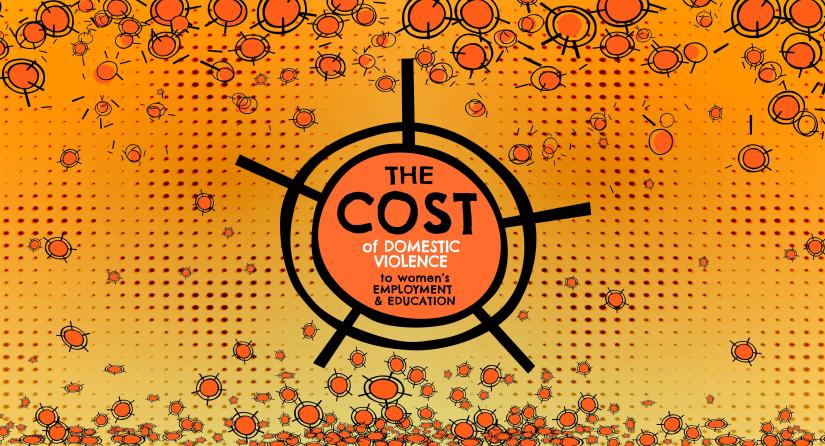The greatest achievements in women’s economic progress in recent decades are potentially being eroded by domestic violence. This is the key finding of a new research report being released today by the University of Technology Sydney’s Business School. The report provides data that enable us, for the first time, to quantify the economic impact of domestic violence on Australian women.
The increase in women’s participation in employment and higher education in recent decades has been nothing short of dramatic. In 1966, about 37% of women were in the labour force, compared to 84% of men. By 2024 that figure had climbed to 63%, with almost 7 million women employed, 57.3% of them in full-time jobs.
Yet our research shows a dramatic “employment gap” between women who have experienced domestic violence and those who have not.
In 2021-22, the employment rate for women who had experienced partner violence or abuse (physical, sexual, emotional or economic) was 5.3% lower than the employment rates for women who had never experienced violence.
The gap is larger for women who have experienced economic abuse, reaching 9.4% in 2021-22, according to customised data commissioned from the Australian Bureau of Statistics (ABS) especially for this report.
The employment gap varies among sub-groups of women. For instance, the gap between women with disability who have recently experienced economic abuse by a partner and women with disability who have never experienced partner violence or abuse is 13.4%. For culturally and linguistically diverse women, the employment gap was 3.7%.
We used the 2018-19 National Aboriginal and Torres Strait Islander Health Survey to try to calculate employment gaps for First Nations women. They certainly existed but, because of the small sample size, the results were not statistically significant. Further research is urgently needed.
The 2021-22 Personal Safety Survey conducted by the ABS reported that 451,000 women have had a previous partner who had controlled or tried to control them from working or earning money. More than 30,000 women have experienced similar conduct from their current partner.
In other words, many men are using forceful tactics to try to sabotage their partners’ employment. They resort to such tactics as hiding her car keys, letting down the car tyres, damaging her work clothes, even getting into her phone’s calendar to change her appointments, trying to make her appear unreliable as an employee.
The ‘education gap’
What is of perhaps even greater concern for the long-term employment prospects of women is the other key finding of our report: the existence of an “education gap” among young women at university. This is especially the case because the growth of women’s participation in higher education has been spectacular.
In 1982, a mere 8% of women aged 25-34 held a bachelor degree or higher. By 2023, this had skyrocketed to 51.6% of women in this age range holding at least a bachelor degree, amounting to 990,000 women.
The education gap is a new and truly shocking finding that young women who experience domestic violence fail to complete their university degrees. For young women, by the time they are 27, there is a nearly 15% gap in the rates of university degree attainment between victim-survivors and other women.
Statistical analysis of data obtained from the Australian Longitudinal Study in Women’s Health, which surveys the same women over time, allows us to track the direct impact of domestic violence in the following years. We show that domestic violence causes a 5.2% decline in young women’s university degree attainment in the year following the first time they report experiencing violence. This rises to 9.7% three years after the violence is first reported.
These findings on the impact of violence on university education in Australia have never previously been reported.
Ripple effects of violence against women
The implications of these findings are immensely significant for the progress of women’s employment.
The lifelong consequences of failing to complete their degrees are significant, with individuals holding a bachelor’s degree in Australia earning 41% more annually than those with only Year 12 schooling. In addition, these young women are likely to have accrued an indexed HECS debt that could affect their credit rating throughout their lives. Their lower earnings also mean a concomitant decrease in retirement savings.
These young women’s economic futures are severely compromised and it will be extremely difficult for them to ever recover those lost opportunities.
Neither can we overlook the fact of, and possible connection between, the dramatic fall in men’s share of bachelor degrees. Women are now outperforming men at university. In 2023, a majority (57.2%) of bachelor students were women. Is this a source of resentment among men?
The existence of domestic violence among students may be news to many people. Indeed, it is not something that has attracted much attention, including from universities, which have policies to provide paid leave and other supports for staff members who experience domestic violence but little for students.
Yet it ought not to be surprising. We know that many students cohabit and so the possibility for violence exists. And we know from the Personal Safety Survey in 2016 that women aged 18-24 experience the highest rates of recent partner violence: 19.3% (compared to 11.5% for women aged 25 to 34 and 7.7% for women aged 35-44).
Our findings point to the growing prevalence of men trying to exert economic control over their partners. Essential to this has been the use of surveillance, especially stalking of women, designed to intimidate and further control. In 2021-22 the Personal Safety Survey found 323,800 women reported a male intimate partner had “loitered or hung around outside their workplace, school or educational facility”. Often such stalking is accompanied by harassment using a phone or other device, which has been made easier by the advent of new technologies.
In other words, the two gaps identified in this report represent the economic consequences of domestic violence, in addition to the physical harm women suffer when targeted by violent partners.
Read the full report, by Anne Summers, with Thomas Shortridge and Kristen Sobeck (2025)
Anne Summers, Professor, UTS Business School, University of Technology Sydney
This article is republished from The Conversation under a Creative Commons license. Read the original article.



